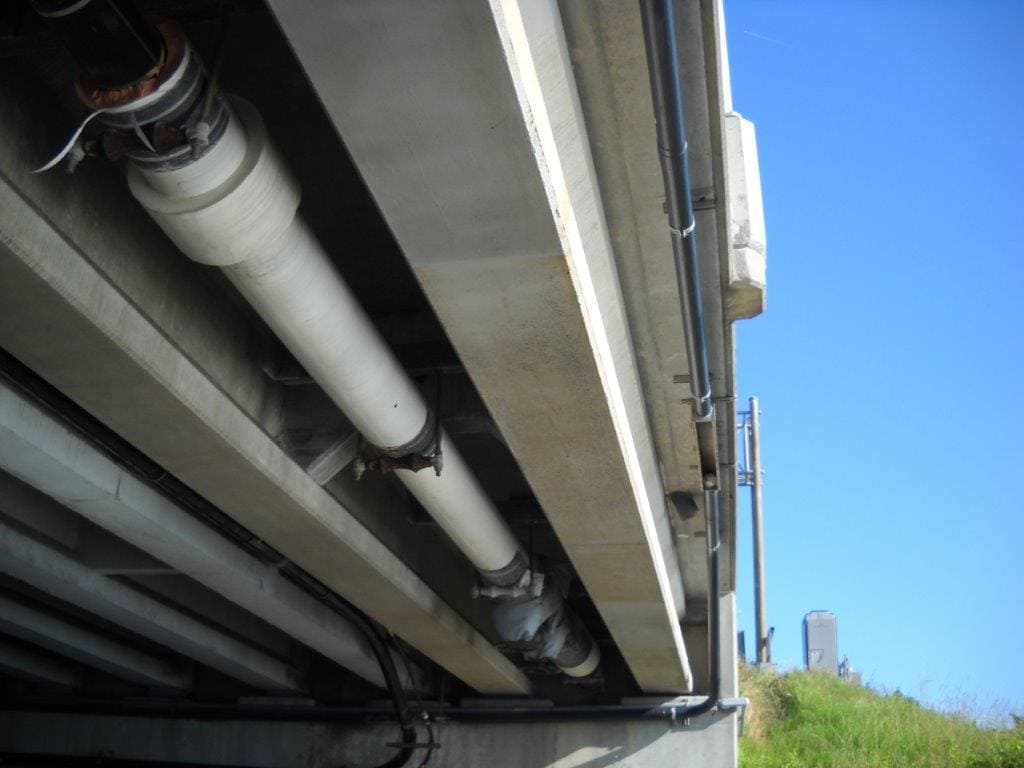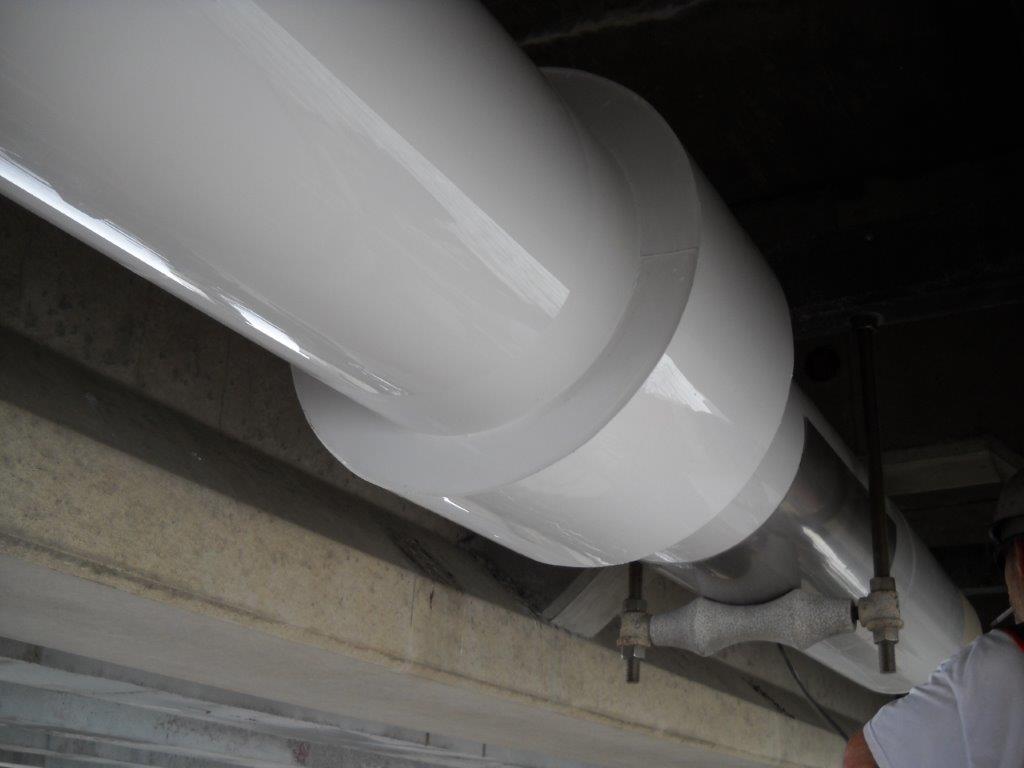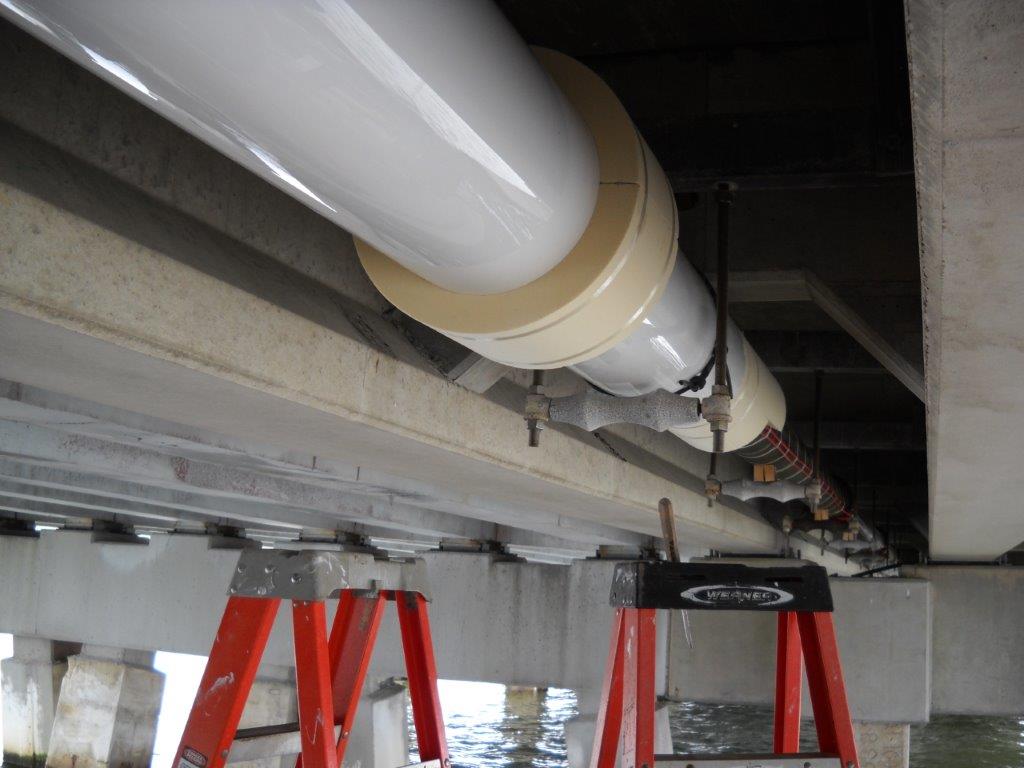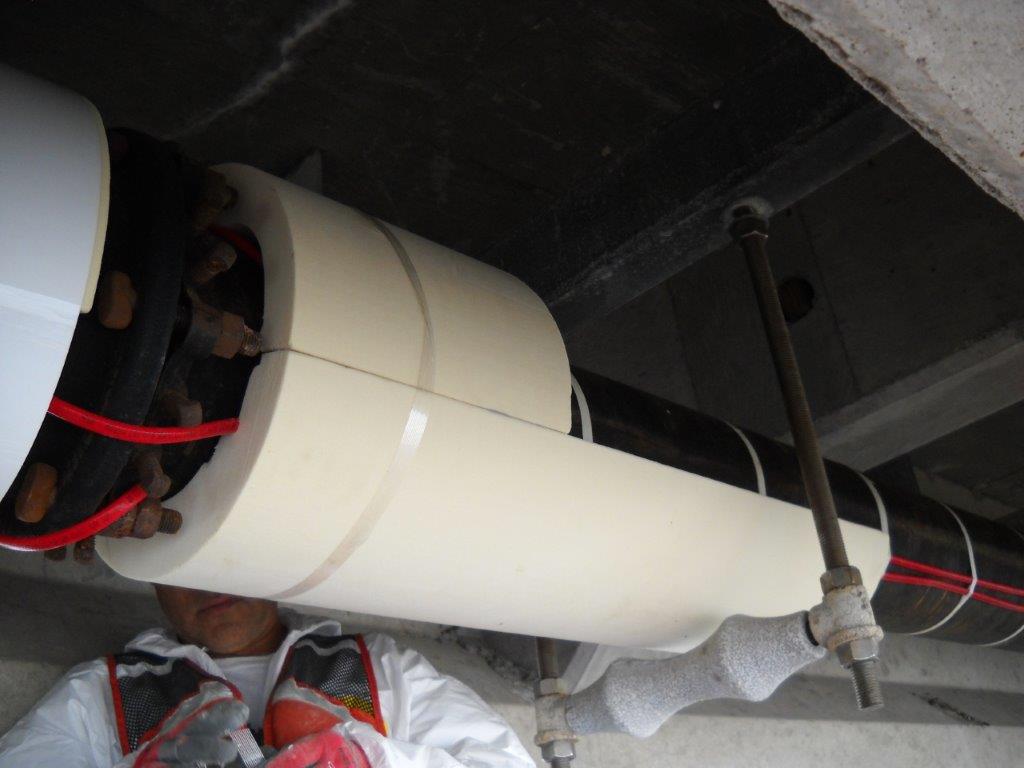Pipe Insulation Project at Hampton Roads Bridge Tunnel
PROJECT STATS
- Quantity: 3650 Lineal Feet 8” Piping
- Completion Time Line: May - November
- Waco Project Manager: Mike Carraway
About This Project
Over 90,000 vehicles make their way across the Hampton Roads Bridge Tunnel every day. This is a substantial increase from the 6,000 vehicles per day that crossed it when it was first opened in 1957.
Vehicles are not the only things that traverse this bridge tunnel. Thousands of feet of electrical cables and water piping cross just below the roadway and are an important link between Norfolk and Hampton.
Maintaining the bridge tunnel infrastructure is no easy task. VDOT relies on quality contractors to make necessary repairs which, if not done properly, can result in major traffic issues. A July 2009 water main break that flooded a portion of the tunnel resulted in a new plan of action, which required more frequent inspections of this critical piping. A recent test demonstrated that electrical heat tracing needed to be replaced. This heat tracing ran along the 8” diameter water main piping located underneath the bridge, between a man-made island and Hampton. The heat tracing, along with the insulation, are the main freeze protection components of the piping system. In order to replace the heat tracing, the old insulation had to be removed first, and new insulation installed after the heat tracing. An electrical contractor was awarded a contract for the heat tracing installation and Waco was awarded the removal and replacement of the insulation.
What IT TOOK TO ACHIEVE THIS PROJECT.
Unique Project Challenges
Over 3600 lineal feet of piping was insulated with 2.5 inch thick polyisocyanurate closed cell foam insulation, with .030 PVC jacketing bonded with an adhesive welded seam. This jacketing system will protect the insulation and electrical tracing from water intrusion, and offers excellent corrosion resistance from salt and other chemical exposure.
Access to the piping was a challenge and required the use of a 20 foot x 40 foot barge with securely mounted ladders. The working height of the ladders fluctuated with the daily tides. Life jackets were continuously worn by all on board in order to adhere to all safety requirements while operating on the water.
The 2017 project was started in May and substantial completion will be accomplished by November. Another well coordinated challenging project completed by the Waco team in Newport News.






